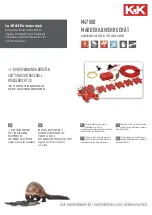
Page | 101
CHAPTER 13: USER INTERFACE
13.1 Overview
This chapter presents the user interface (or operator view) of the
i
³C Lite and some of the model
specific characteristics of the
i
³C Lite as compared to the rest of the
i
³ line. This chapter does NOT
cover building screens or using the
i
³ Config graphics editor. For instructions on creating screens and
using the graphics editor, refer to the
Graphics Editor Help File
in
i
³ Config.
NOTE:
The
i
³C Lite screen is a 4.3-inch diagonal LCD screen with an LED backlight.
13.2 Displaying and Entering Data
Figure 13.1
–
Example Screen
Multiple objects are provided for displaying data such as virtual panel lights, push buttons, numeric
value displays, bar graphs, meters, graphs, and animated bitmaps. On the
i
³C Lite, these graphical
objects (through ladder manipulation of attribute bits) can change color, flash, or change visibility to
attract operator attention.
On objects that accept user input, the input is provided by touching the object or alternately changing
an
i
³ register (i.e. Function Key Registers). Objects that allow input generally have a raised 3D
appearance. An exception is the binary type objects, such as buttons, which are shown in a depressed
3D appearance when in the ON state. Objects that normally accept touch input may be disabled
through program control (through ladder manipulation of an attribute bit). If an object is disabled, the
object’s representation changes to a 2D appearance.
Summary of Contents for i3C Lite
Page 1: ......
Page 8: ...Page 8 ...
Page 65: ...Page 65 Figure 9 3 Screen Calibration ...
Page 78: ...Page 78 Figure 11 2 Relay and Digital Output ...
Page 82: ...Page 82 Figure 11 5 Digital Input ...
Page 86: ...Page 86 11 9 RTD Wiring on J3 Connector ...
Page 110: ...Page 110 Figure 13 8 Alarm Configuration in i Config ...
Page 167: ...Page 167 ...
















































